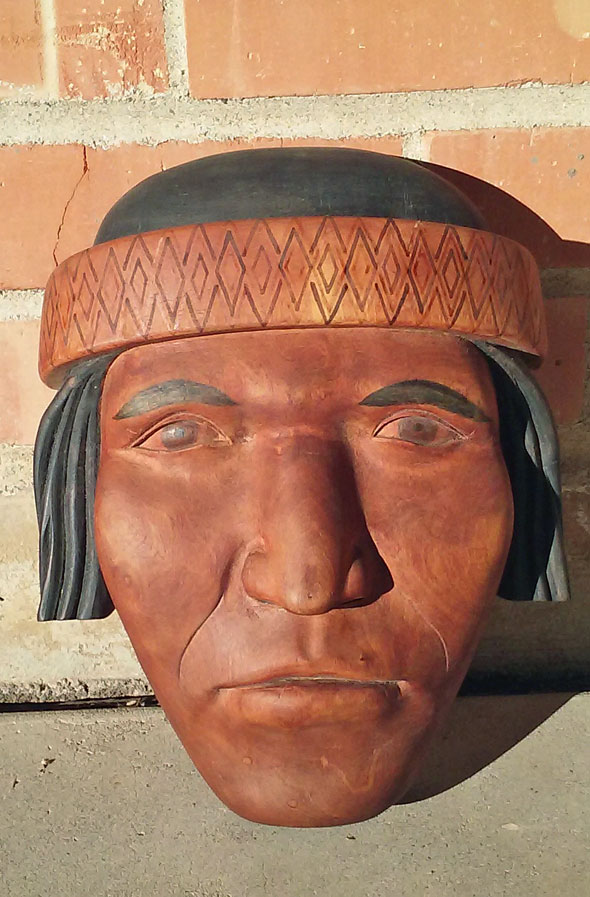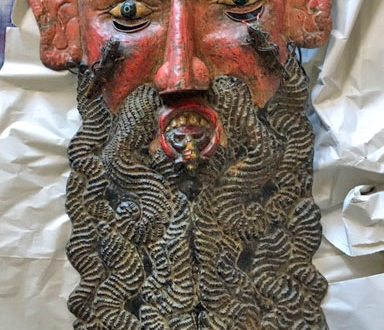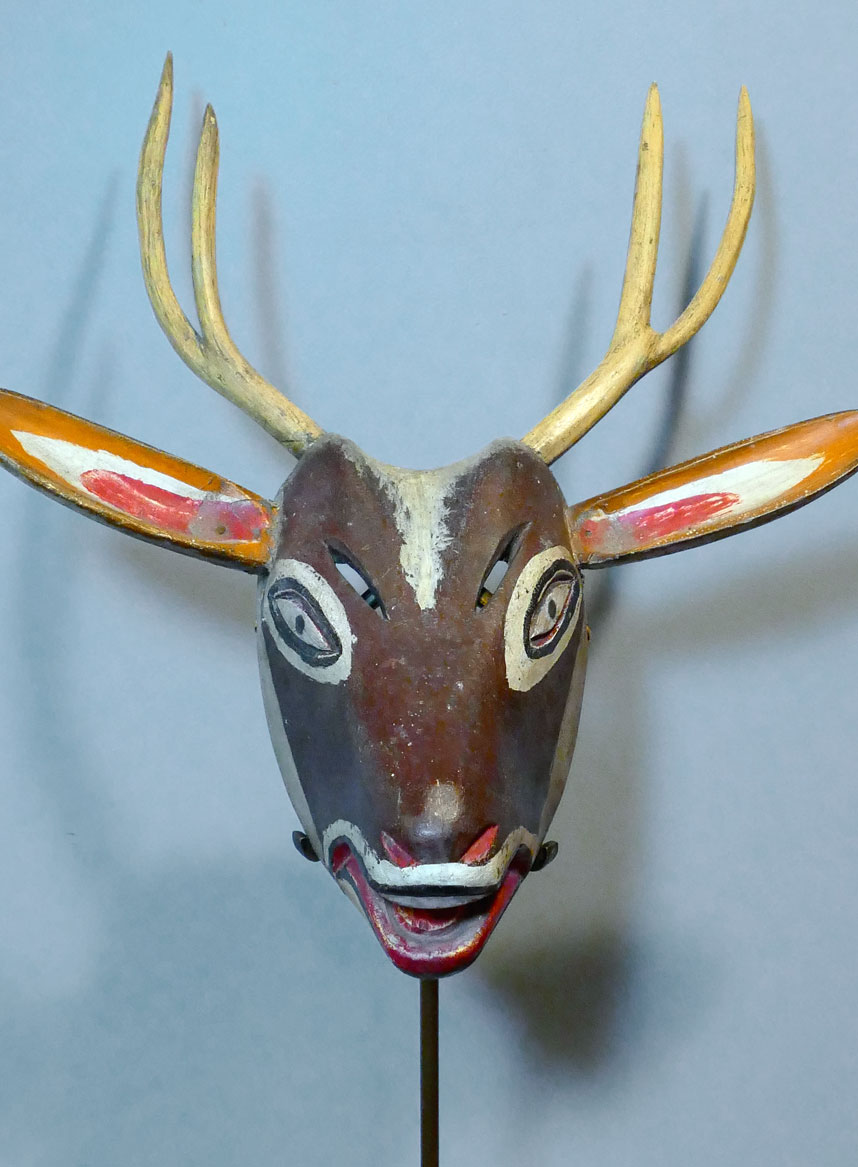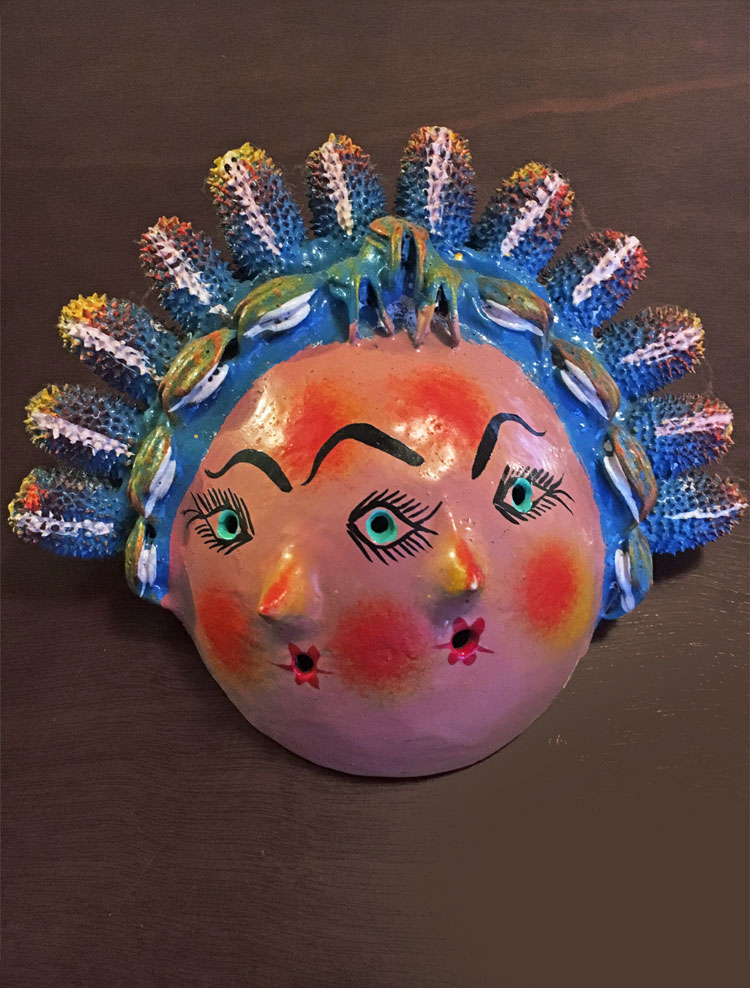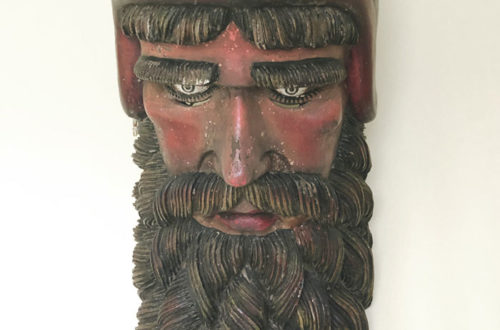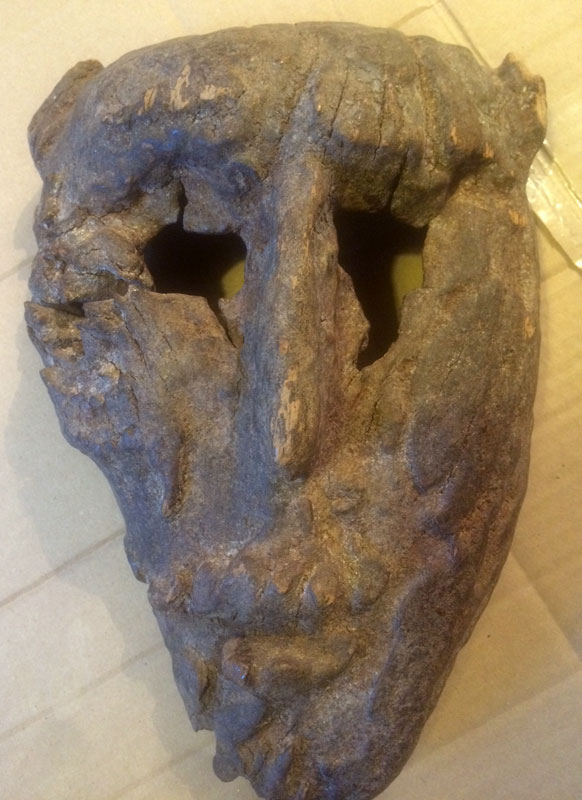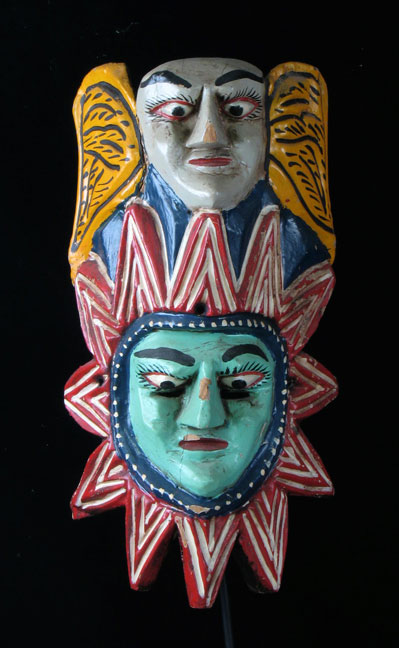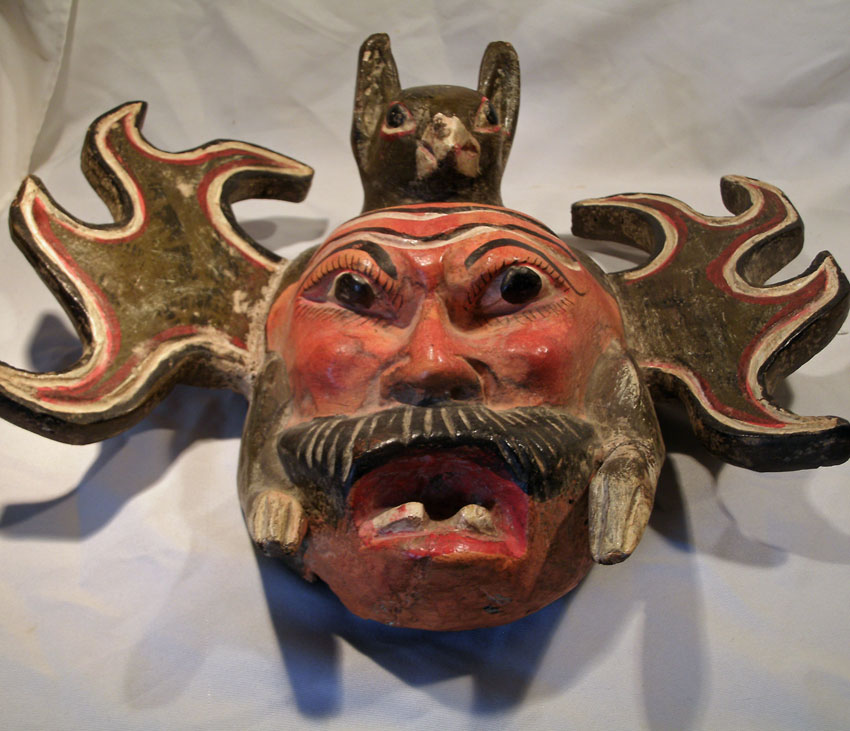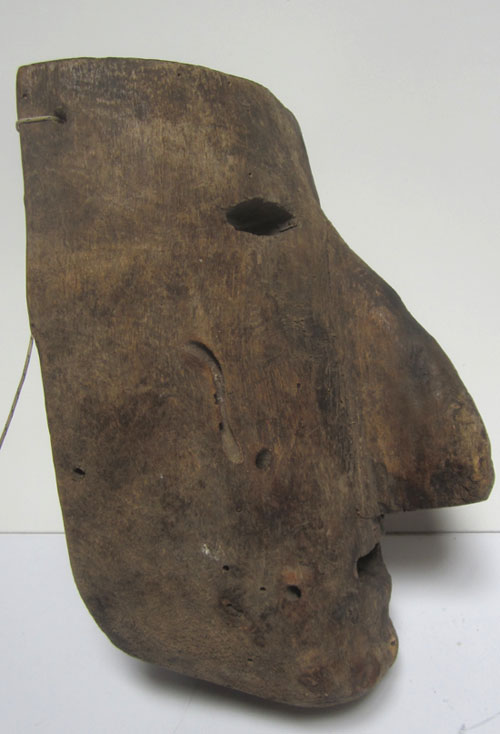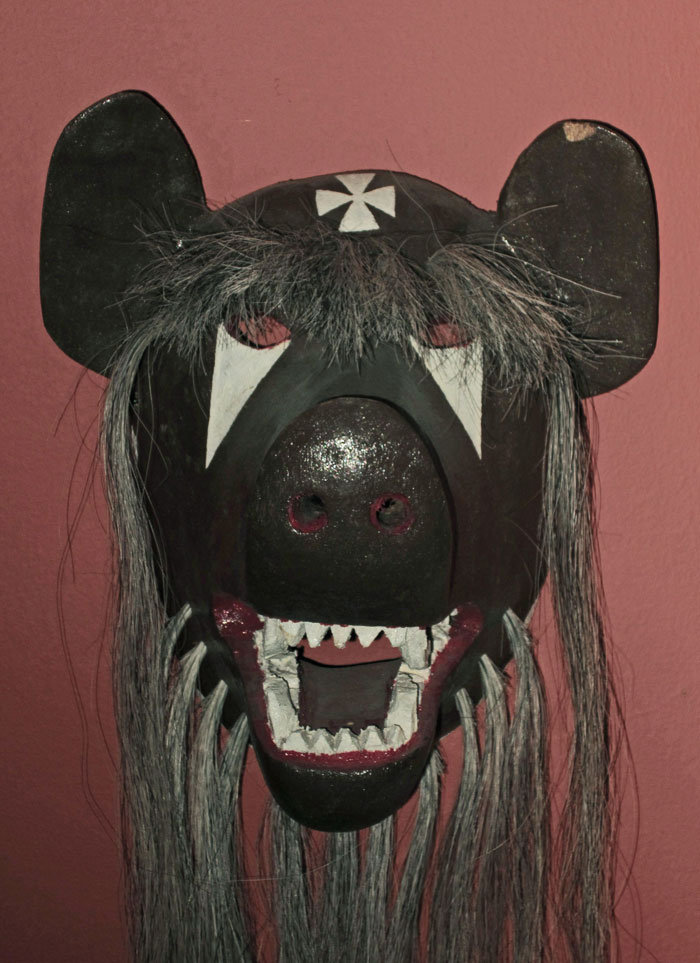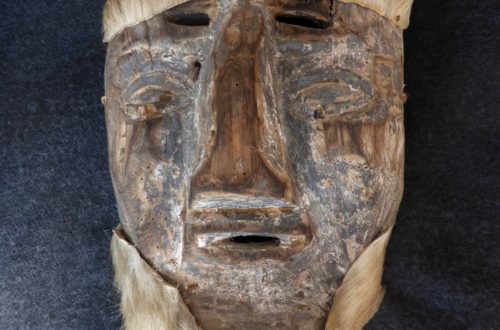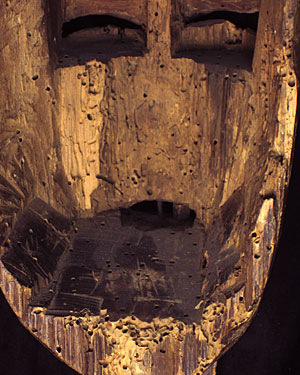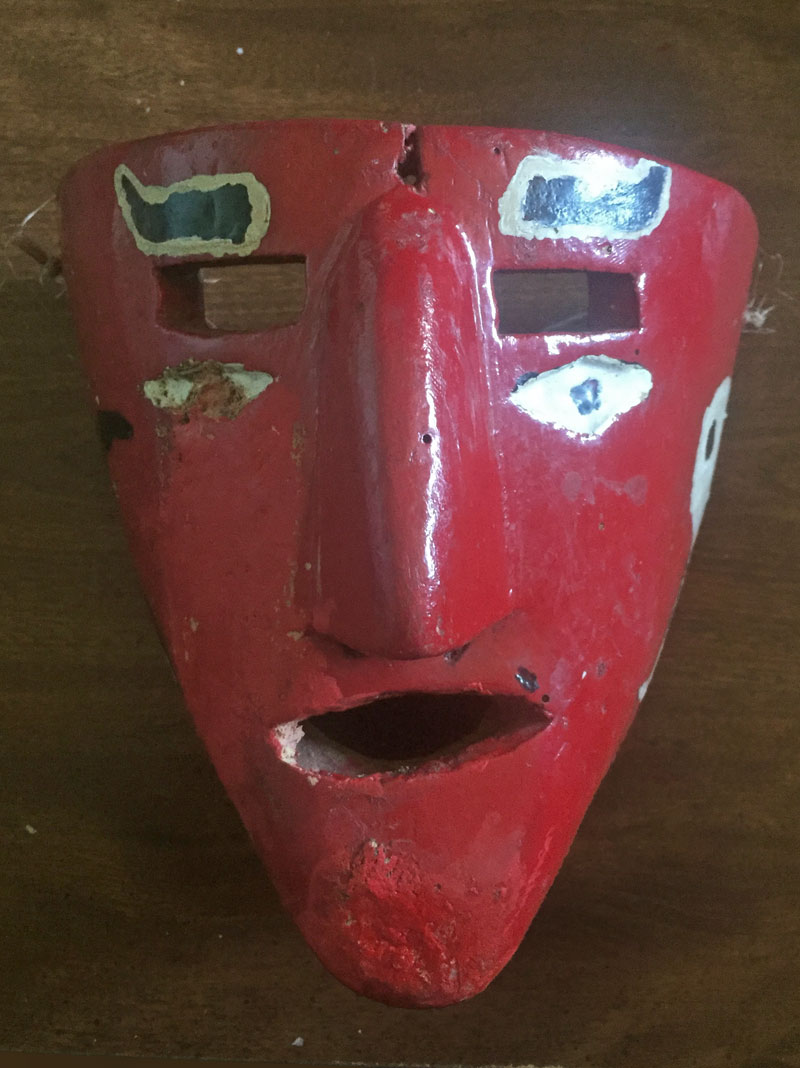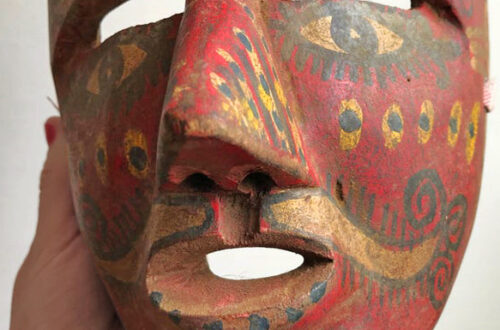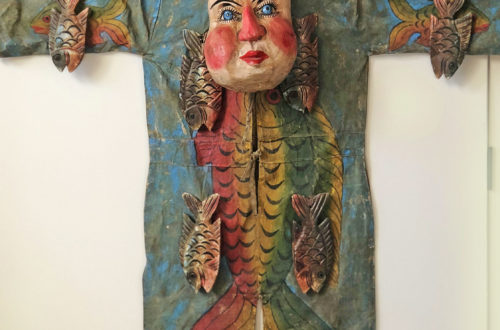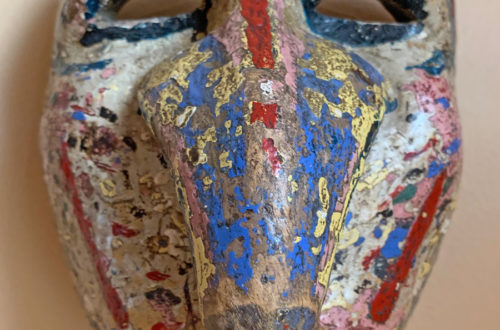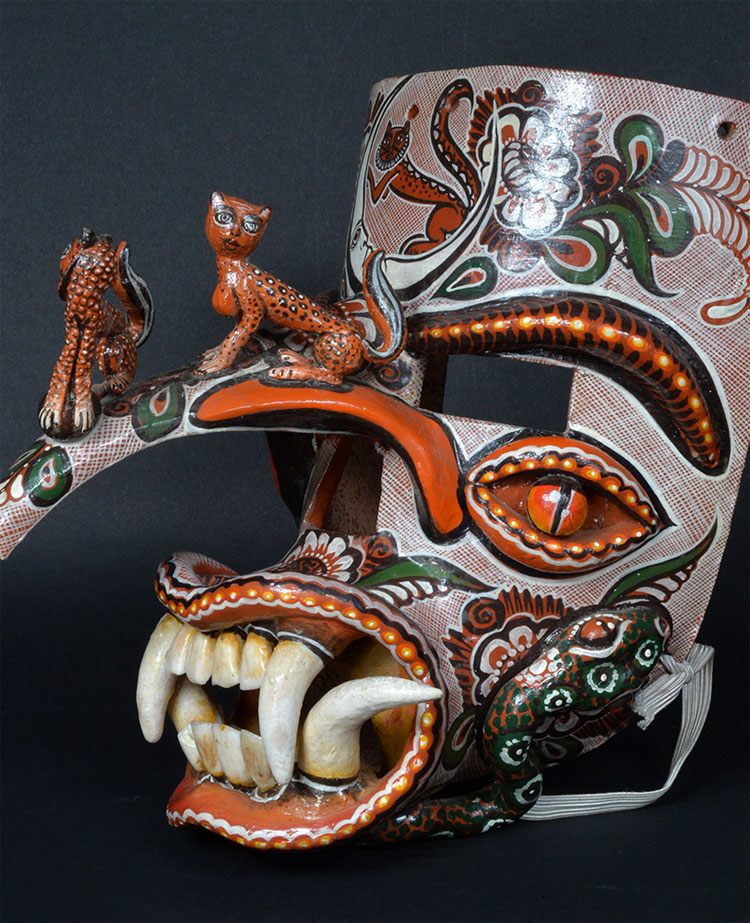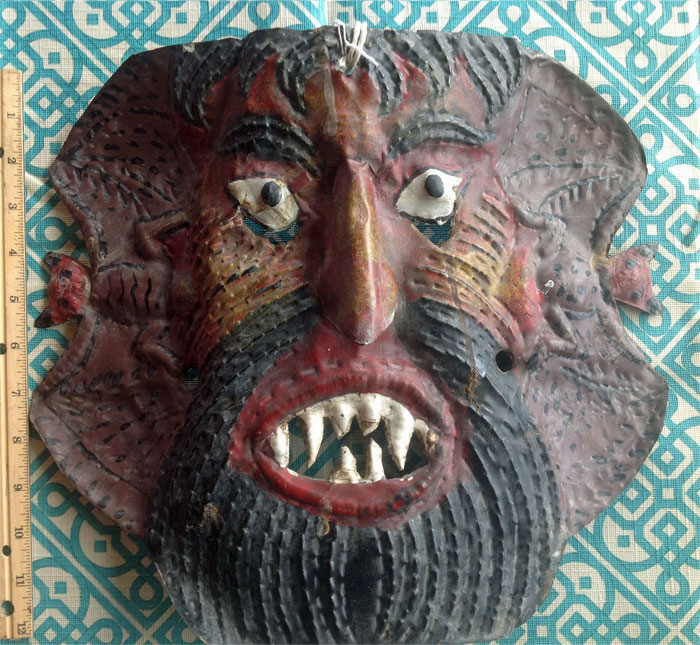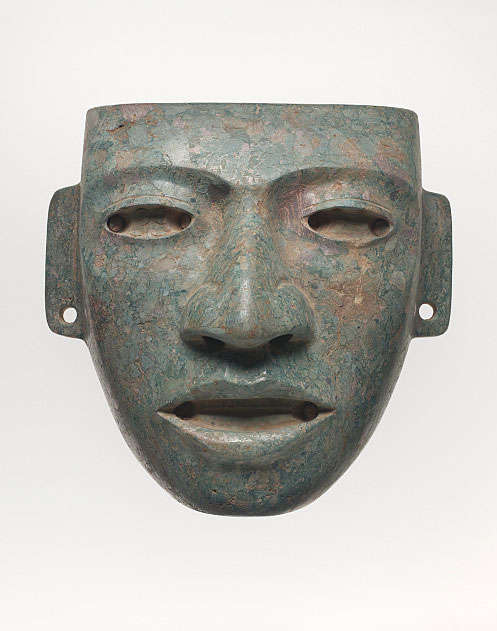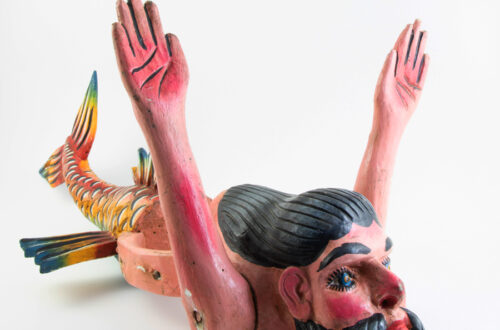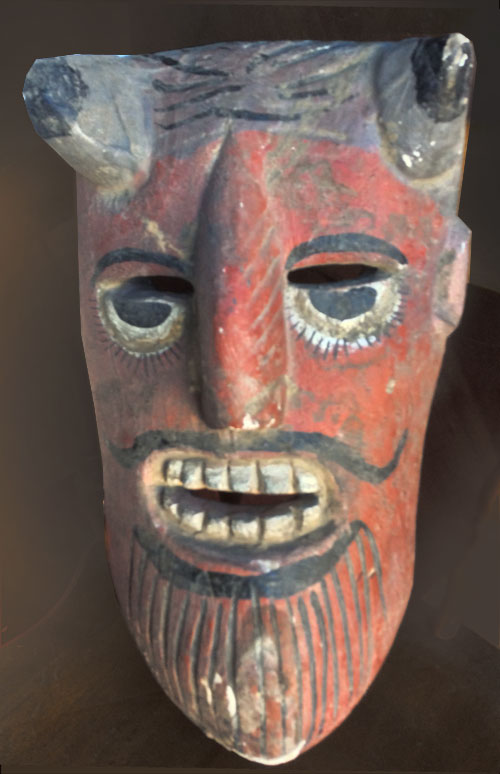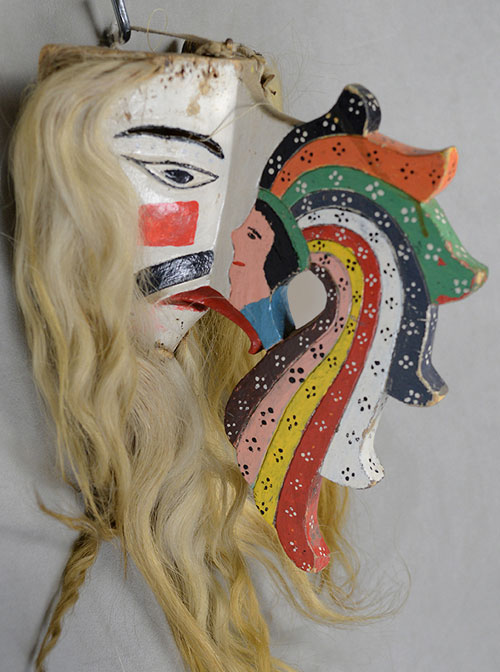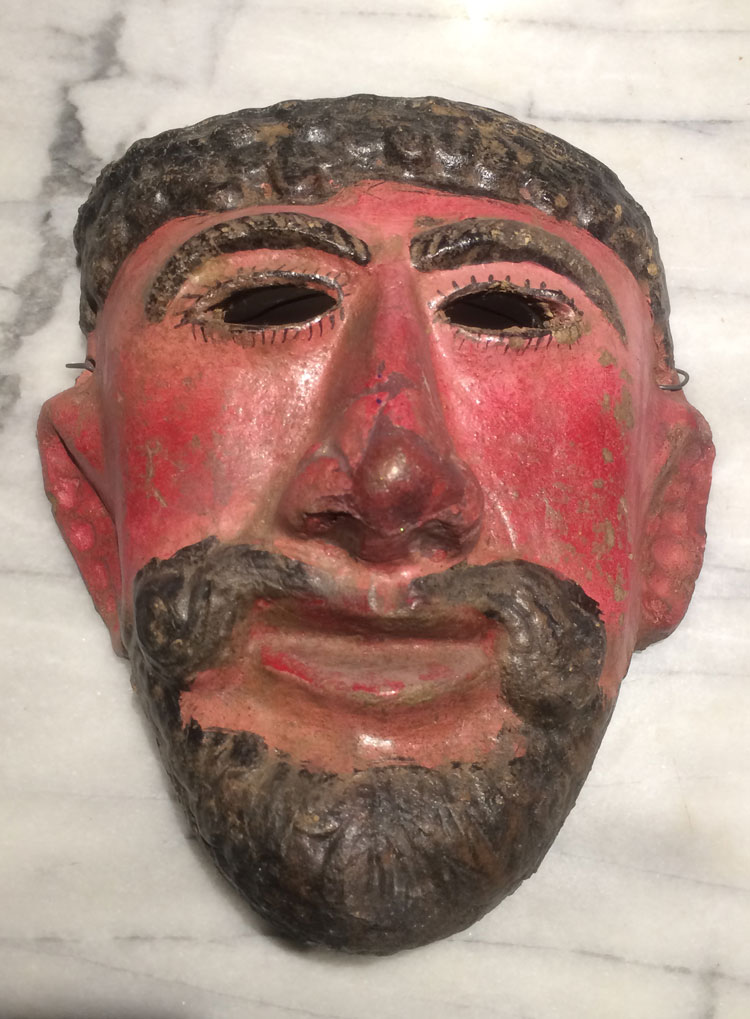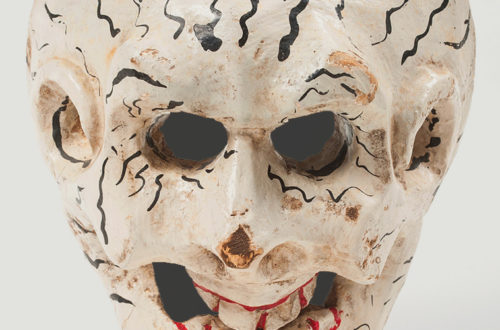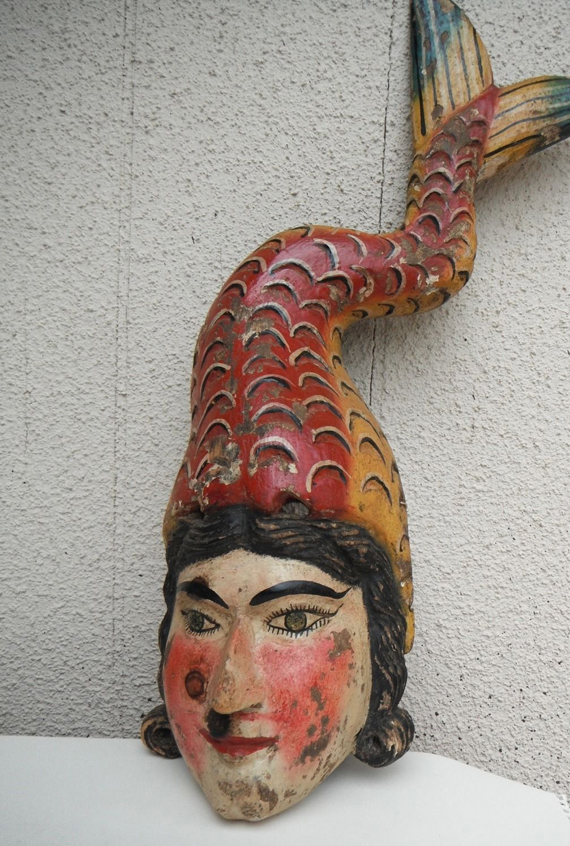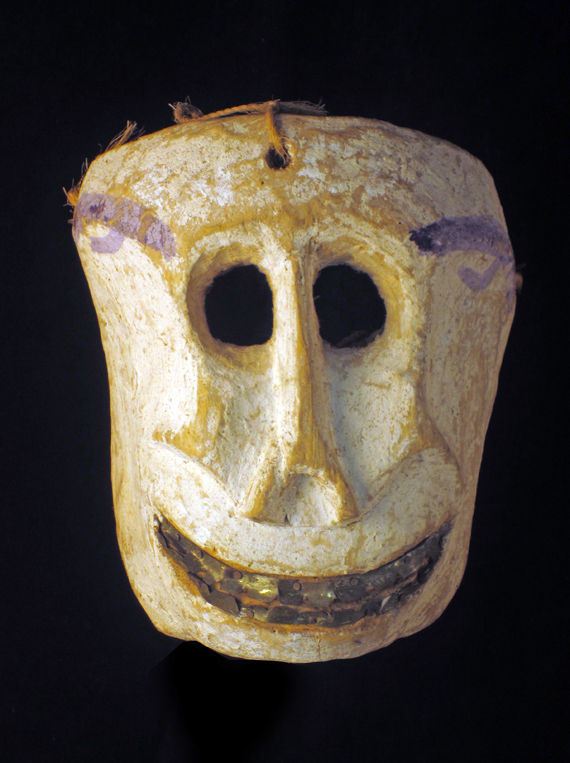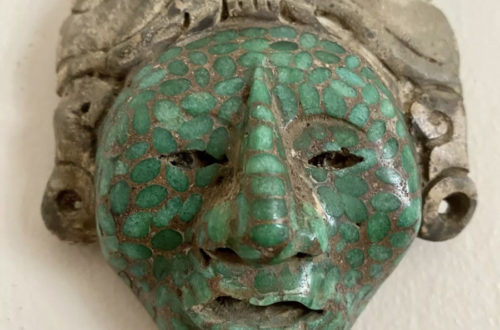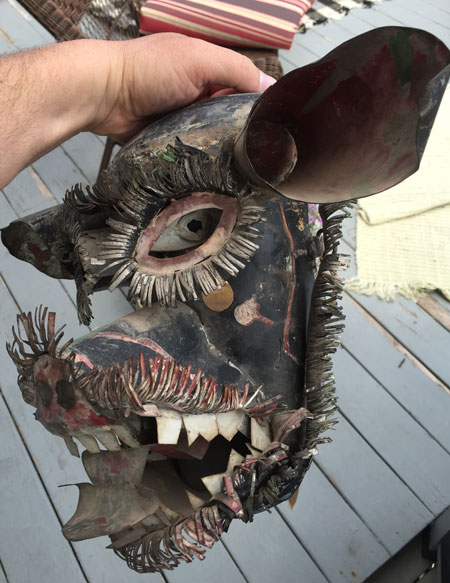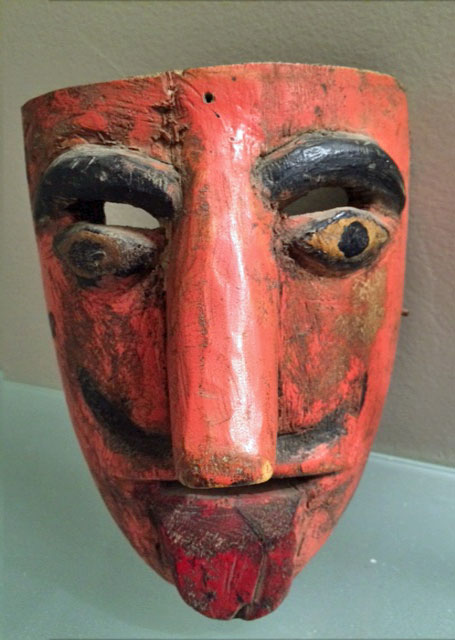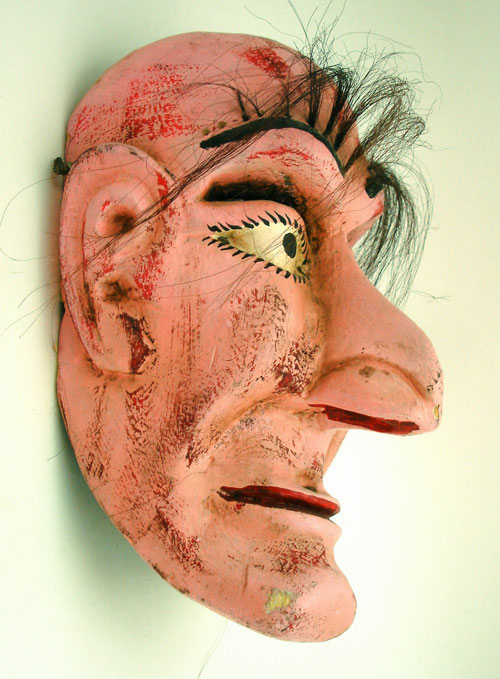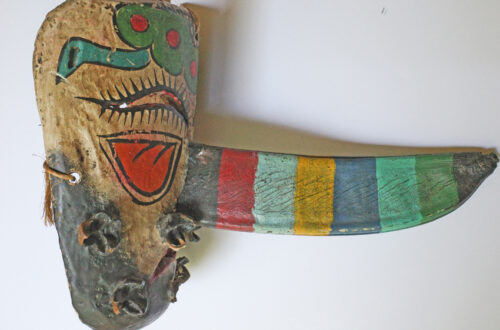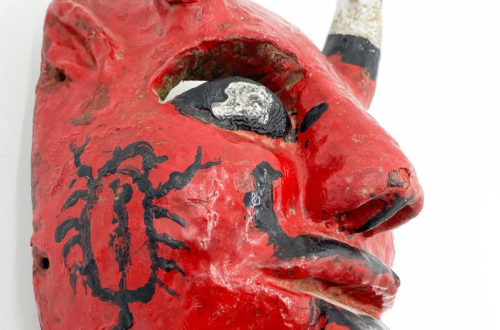Q: I recently purchased a few masks from a local auction in the south of England. I’m not a collector of masks but a collector of the unusual and beautiful. There were three in the lot. I understand you only respond to one question at a time. I believe two to be Balinese but the third I have no idea. The three masks cost me £90 with all fees included. I will contact you again about the other two later. Thank you for your time. Alex, 1179 A: This is proof that the long tradition of Mexican decoratives is alive and well. If you’re unfamiliar with Mexican masks, “decorative” is…
-
-
Mexican decorative
Q: Here I’ve attached pictures of my mask. It’s pretty small, so I don’t think it’s meant to be worn except maybe by a toddler. It’s about 8″ in diameter, maybe less. I got it for free on my local buy nothing group (Facebook) here in Seattle so I didn’t pay anything for it. Any info you could tell me about it would be wonderful. Thanks, Tracy, 1161 A: Mexican decoratives are not really masks, nor are they meant to be authentic artifacts. They’re wall-hangings made for tourists. I find them colorful, inventive, and almost as interesting as real dance masks. Mexican mask makers are very creative and frequently come…
-
My first mask
I bought this at a flea market in the 1970’s. Tons of them were being made in the state of Guerrero for sale to tourists and homeowners in the USA. Once when I was visiting Los Angeles I saw a truck load of them dumped on a store’s loading dock. No two were alike. The euphemistic term for these non-traditional masks is “decoratives.” In the book Masks of the World pages 133-5 are devoted to the genre. That is because these masks often exhibit great creativity, but always in colors and forms that are characteristic of Mexican culture. I think Picasso would have loved them. C Save
-
Yaqui and Mayo Pascola masks
In the states of Sonora and Sinaloa in northwestern Mexico there are two Indian tribes who are well know for their masked performances. I wanted to show you this Yaqui Pascola mask with its short eyebrows, plus a group of 13 similar masks that portray different characters and animals. The ones with long, flowing eyebrows are used by the Mayo who are further south in Sinaloa. I wanted to show you these masks because Pascolas get used a lot on Good Friday (which is today). And because I mentioned in the previous blog that I admire mask collections that focus on one type of mask, a single culture or a…
-
Old, used Mexican mask
Q: I picked this mask up in a little shop in Juarez Mexico City. The seller said that it was authentic. On each cheek there is half of a yin yang. Not what I typically think of for Central America. The eye hole placements look right for a Mexican mask though, there seems to be signs of wear, there’s a nose hole, and it’s been visibly repaired. To me, all signs of authenticity. I asked the seller to write down anything she knew. She wrote “Mascava del año 1940” and “Estado de Veracruz”. The mystery gets better due to the fact that the original owners name was written on the…
-
All of Mexico goes nuts at Carnaval Time
It’s an official holiday that begins a five-day celebration before the Catholic lent begins on Ash Wednesday. We’re talking about food, drink, parades, costumes, music and dancing in the streets. This particular mask represents a pretty woman called a Mujer and she is from the state of Tlaxcala. The carved-wood mask has glass eyes with lids that move, real jewelry and a gold tooth. She would be portrayed by a boy who could make the Mujer wink at the Paraueros and Charros with whom the young boy/woman is dancing. It’s very similar to the Catrine masks that also come from Tlaxcala. And there are hundreds of different looking masks being…
-
Pre-Columbian stone and clay
Q: You looked into a mask for me last year. (#879, 02.01.2016, in the Mexico archive) It was a small terra-cotta face that might be part of something bigger. Will this be something you could do an appraisal on? If so please let me know how to do it. If not can you recommend someone to do it. Thank you, Brandon, 1130 (The mask he refers to is described below with the photo.) A: From the Pre-Columbian era of Latin America, this little head is not a mask, but served some other purpose. There were also full-size masks made of clay or stone from the same cultures that could…
-
Mexican mask of clay
Q: Thank you for taking time to comment on my last submission. Those kind words reignited my love for these wonderful artifacts, which leads to the following request. I have recently come across another mask that sparked my interest. It is billed as a hand-carved 19th century Mexican mask. It appears, however, that this is a terracotta mask, which calls into question the seller’s billing. I am aware that terracotta masks were made but were done so in the pre-Hispanic period. The seller, who is not a professional, is asking $75 for the mask. Is the mask a hoax or worth the asking price? Thanks in advance for any help…
-
The big bearded Mexican
Q: Hello and thank you for making contact available. Attached are three images of a mask that I have had for many decades. I bought it as a Spanish Barbone and know little else about it except that it is old and wonderful. Your perspective would be appreciated. Andrea,1120 A: The Barbone has been a popular tourist mask in Mexico for many years. And why not? That big, stylish beard is absolutely gorgeous. It has also been a subject of controversy. Some time ago these masks were thought to be historically important artifacts worth lots of money. Now we know they came from a workshop in Guerrero and were intended…
-
Charming old Mexican mask
Q: I am a small time collector and acquired this mask about 20 years ago from an antique mall in Phoenix, AZ. I do not remember the exact amount I paid but it was somewhere around $50, which I recall being a real stretch for me! The mask is approx 5.5 inches tall and 4.5 inches wide. I have always wondered whether this mask was actually used and, if so, where it came from. Even if it turns out that this guy was made as tourist fodder it still remains the favorite in my small collection. Eric, 1119 A: I too love Mexican masks, and this appears to be a…

